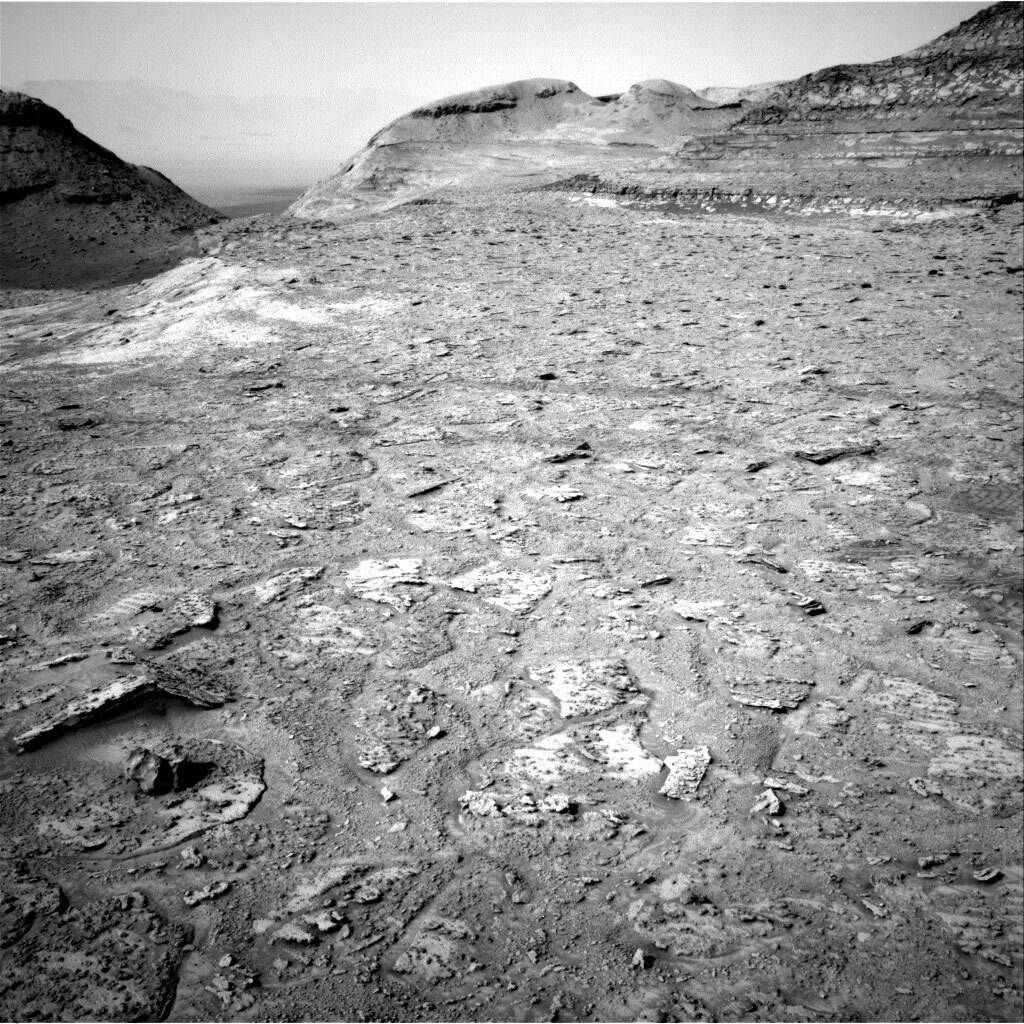2 min read

Curiosity successfully followed her tracks and is back near the Encanto drill site! With a beautiful workspace in view, the science and operations team had a busy day of planning on the “Marker band” surface. We assessed potential drill targets, selected targets for contact science, and planned imaging.
When evaluating the rocks in the area for the best possible drill site, the team focused on identifying large, flat, thick blocks that didn’t fracture or move when the rover drove over them. Several candidate drill sites were discussed and a favorite was chosen, with several blocks identified as back-ups. The plan includes Mastcam stereo images of our favorite potential drill target along with three alternate nearby drill targets. Upon the completion of the contact science described below, Curiosity will drive ~10 meters to the potential drill site and unstow the arm. Post drive clast surveys and workspace survey mosaics will be acquired.
Directly in front of the rover, two bedrock targets will be studied. MAHLI and APXS will analyze a bedrock target named “Pico Espejo,” and ChemCam, MAHLI, and Mastcam will characterize the geochemistry and texture of the nearby “Uatatas” target. After finding the meteorite named Cacao on sol 3725, we will take ChemCam passive and a Mastcam image of another possible iron meteorite named “Cana Dulce.” Mastcam will take stereo images a sand dune along the Marker band horizon in the distance as well as stereo images of the repeated layers at the base the Amapa Butte. The afternoon will contain observations to characterize dust in the atmosphere and twilight imaging.
After a full day of science activities, the science block on sol 3736 will be untargeted. Navcam will be used to look for dust devils and Mastcam will characterize potentially iridescent ice clouds at twilight. We are all looking forward to our upcoming mid-week planning session and the start of another drill campaign!
Written by Sharon Wilson Purdy, Planetary Geologist at Smithsonian National Air and Space Museum







